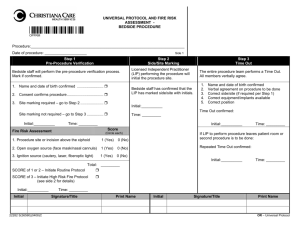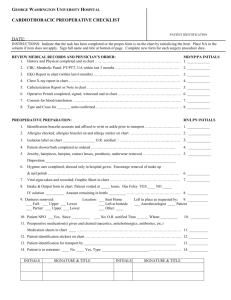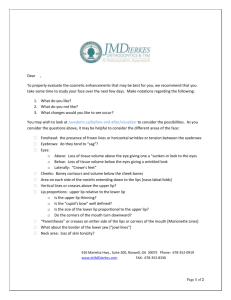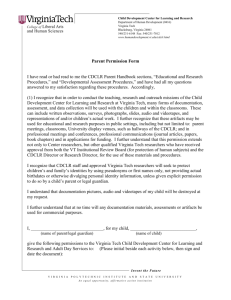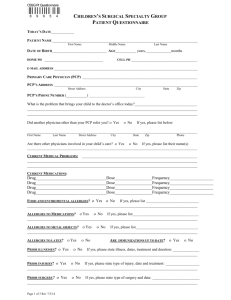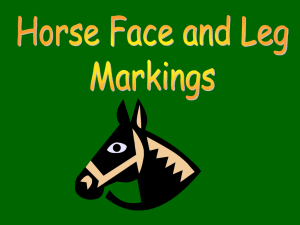Universal Protocol and Fire Risk Assessment for
advertisement
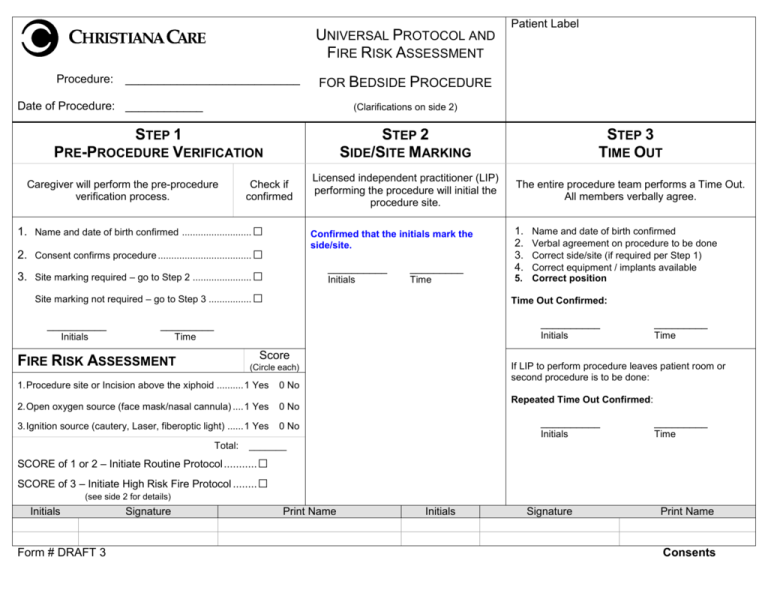
UNIVERSAL PROTOCOL AND FIRE RISK ASSESSMENT Procedure: ___________________________ FOR BEDSIDE PROCEDURE Date of Procedure: ____________ (Clarifications on side 2) STEP 1 PRE-PROCEDURE VERIFICATION Caregiver will perform the pre-procedure verification process. Check if confirmed 1. Name and date of birth confirmed .......................... □ 3. Site marking required – go to Step 2 ...................... □ Site marking not required – go to Step 3 ................ _________ Initials Time STEP 2 SIDE/SITE MARKING STEP 3 TIME OUT Licensed independent practitioner (LIP) performing the procedure will initial the procedure site. The entire procedure team performs a Time Out. All members verbally agree. Confirmed that the initials mark the side/site. 2. Consent confirms procedure ................................... □ __________ Patient Label __________ _________ Initials Time □ 1. 2. 3. 4. Name and date of birth confirmed Verbal agreement on procedure to be done Correct side/site (if required per Step 1) Correct equipment / implants available 5. Correct position Time Out Confirmed: __________ _________ Initials Time Score FIRE RISK ASSESSMENT If LIP to perform procedure leaves patient room or second procedure is to be done: (Circle each) 1. Procedure site or Incision above the xiphoid .......... 1 Yes 0 No 2. Open oxygen source (face mask/nasal cannula) .... 1 Yes 0 No 3. Ignition source (cautery, Laser, fiberoptic light) ...... 1 Yes 0 No Total: Repeated Time Out Confirmed: __________ _________ Initials Time _______ □ SCORE of 3 – Initiate High Risk Fire Protocol ........ □ SCORE of 1 or 2 – Initiate Routine Protocol ........... (see side 2 for details) Initials Form # DRAFT 3 Signature Print Name Initials Signature Print Name Consents Side 2 UNIVERSAL PROTOCOL AND FIRE RISK ASSESSMENT FOR BEDSIDE PROCEDURES □ This form shall be used when an RN or tech assists or observes a Licensed Independent Practitioner (LIP) performing a bedside procedure. In the event that the LIP performs a procedure without assistance or observation by an RN or tech, the LIP will document their Time Out in the procedure documentation and this form may be omitted. Step 1 – Pre-procedure Verification Process Purpose: To outline the process for identifying the correct person, correct procedure, and correct site for surgical and invasive procedures with involvement of the patient or decision maker when possible. A. The caregiver (RN/LPN, anesthesia provider, surgeon, resident, PA) beginning the verification process will initiate this form. B. Mark ( ) the boxes confirming your verification process. C. Resolve discrepancies identified through the verification process prior to initiating the bedside procedure. Step 2 – Side /Site Marking Purpose: To clearly identify the intended site of incision or insertion. A. Licensed Independent Practitioner (LIP) performing the procedure will initial patients having surgical/invasive procedures involving laterality, digits or level(s). The RN will confirm presence of LIP initials. Step 3 – Time Out Purpose: To conduct a final verification of the correct patient, procedure, site and implants (if applicable). A. Time out is completed prior to the start of each procedure B. Designated person (assisting RN or tech) will confirm agreement, and record Time Out. C. In the event that the LIP performing the procedure leaves the patient, repositions patient or performs second procedure after the Time Out had occurred, the Time Out process is repeated and documented. FIRE RISK ASSESSMENT Routine Protocol 1. Fuel a) When an alcohol based solution is used, use minimal amount of solution and allow sufficient time for fumes to dissipate before draping. Observe drying time (minimum 3 minutes). Do not drape patient until flammable prep is fully dry. b) Do not allow pooling of any prep solution (including under the patient). c) Remove bowls of volatile solution from sterile field as soon as possible after use. d) Utilize standard draping procedure 2. Ignition Source a) Check all electrical equipment before use. b) Protect all heat sources when not in use. (cautery pencil holster, laser in stand by mode etc.) c) Activate heat source only when active tip is in line of sight. d) De-activate heat sources before tip leaves surgical site. High Risk Protocol (includes all of routine protocol 1. Use appropriate draping techniques to minimize O2 concentration (i.e. tenting, incise drape). 2. Electrical Surgical Unit (ESU) setting should be minimized. 3. Encourage use of wet sponges. 4. Basin of sterile saline and bulb syringe available for suppression purposes only. 5. Anesthesia Care Provider considerations: A syringe full of saline will be available, in reach of the anesthesia care provider, for procedures within the oral cavity. Documentation of oxygen concentration/flows. Use of “MAC Circuit” for oxygen administration.
